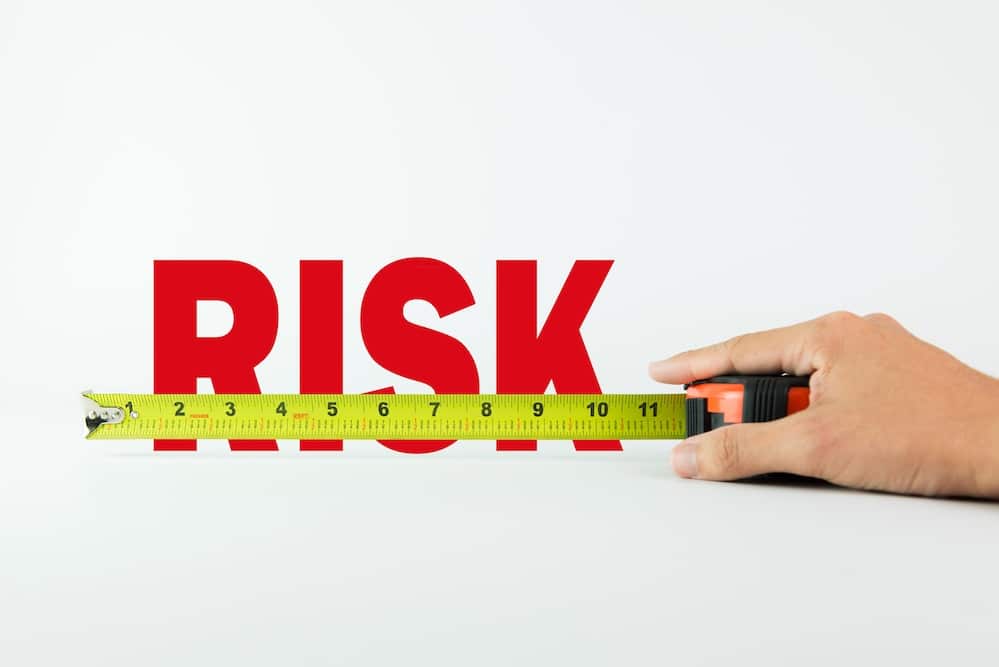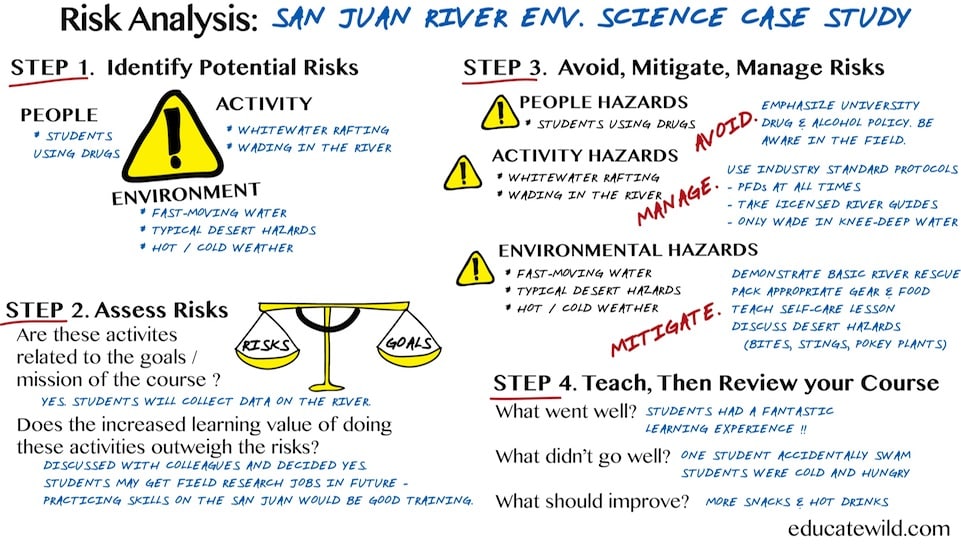Here’s an outdoor educator’s nightmare: You’re walking through the woods and you spot a bunch of teens climbing barefoot on a rocky cliff leading to water. Other inexperienced campers clumsily tend a campfire that is about to get out of control. Still others in this group stand waist-deep in a river, oblivious to the fast-moving water just feet away, or the possibility of divers above them.
You look around and there doesn’t appear to be any adults, instructors or guides at this nightmarish campsite. What’s wrong with this picture?
First off, if you’re a professional outdoor educator or backcountry guide, you’re probably tempted to walk in amongst this mayhem and ask these youngsters what group they’re with and then ask them what it is they think they’re doing?
The Practice of Risk Management
Here at The National Center for Outdoor & Adventure Education (NCOAE), we take risk and site management seriously. To us, it’s far more than just a documented policy or procedure found in a three-ring binder in our office. As outdoor professionals, we’ve invested many hours in planning our trips to mitigate dangers and to bring each of our participants back home safely.
Why is it, for example, that we see more injuries take place in school physical education classes and in afterschool and competitive sports than in outdoor programs like ours? Is it because the outdoor and wilderness education industry is doing such an amazing job of site and risk management?
Or do our stringent safety practices enable us to go places that parents, cubicle dwellers and the media deem dangerous? I don’t have a definitive answer. I do know I feel safer spending weeks in the woods, or on rock and on rivers than I do walking across an urban intersection.
What do we know? Site management has to be monitored. We need to look for strengths, weakness and flaws in what we are doing. We need to check in, listen to our field staff and reflect as instructors, organizations and as an industry. And we must share what we learn and continue to bring our students back better than when they came to us. That’s one of reasons we’re such big supporters of outdoor industry associations and trade groups like the Association for Experiential Education (AEE) and the Outdoor Industry Association (OIA) — because they encourage us to share what know, expressly for the benefit of our peers.
Four Steps to Better Risk Management
Dr. Angie Moline, founder of Educate Wild! and a senior lecturer in environmental science at Northern Arizona University, says outdoor educators should include activities on their courses that contain as little inherent risk as reasonably possible. She recommends a four-step approach to risk management that takes a lot of the “luck” out of outdoor risk management:
- Identify Risks
- Assess Risks
- Avoid, Mitigate, and Manage Risks
- Teach, Then Review Your Course
Here’s a visual example of Dr. Moline’s recommended approach, courtesy of her website: EducateWild.com:
For more Dr. Moline’s thoughts, read Speaking from Experience: Four Steps to Better Risk Management on OutdoorEd.com.
Questions to Consider
In the end, as parents, instructors and leaders in this industry, we all place an emphasis on site and risk management. It’s a major part of our DNA.
- What are your objectives with risk management?
- How can you improve and measure your improvement?
In closing, here are some conversation starters on risk management that you might want to explore:
– – – – – – – – –
About the Author: Stephen Mullaney is the staff development director at The National Center for Outdoor & Adventure Education (NCOAE) in Wilmington, N.C., where he is responsible for the training and education of NCOAE’s field instructors. He is a member of the North Carolina Association of Educators (NCAE) and has taught within the Durham, N.C., public school system. Stephen received his undergraduate degree in English from Framingham State University, and an independent, alternative Masters in Education.
TALK TO US
Have any further questions about our courses, what you’ll learn, or what else to expect? Contact us, we’re here to help!


Leave a comment